 An official website of the United States government. Here's how you know.
An official website of the United States government. Here's how you know.
 An official website of the United States government. Here's how you know.
An official website of the United States government. Here's how you know.  An official website of the United States government. Here's how you know.
An official website of the United States government. Here's how you know. Unit:
Headquarters Company, 3rd Battalion, 9th Infantry Regiment, 2nd Infantry Division
Date of Birth:
April 30, 1929
Hometown:
Mobile, Alabama
Date of Death:
MIA: December 1, 1950; DOD: February 28, 1951
Place of Death:
Vic Kunuri, North Korea
Awards:
Combat Infantry Badge, Korean Service Medal, National Defense Service Medal, Prisoner of War Medal, Purple Heart Medal, Republic of Korea Presidential Unit Citation, Republic of Korea War Service Medal, United Nations Service Medal
Cemetery:
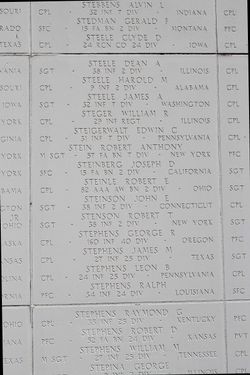
Harold Steele was born in Mobile, Alabama, on April 30, 1929, to Thomas and Catherine Steele. Harold had one younger sibling, Thomas, Jr.
The Steele family lived in the Maysville Historic District of Mobile, Alabama, a working-class neighborhood. Harold’s father, Thomas, registered for the draft during World War II, but it is unknown whether or not he served during the war. Harold attended Heart of Mary High School and left for the U.S. Army shortly after graduating in 1948.

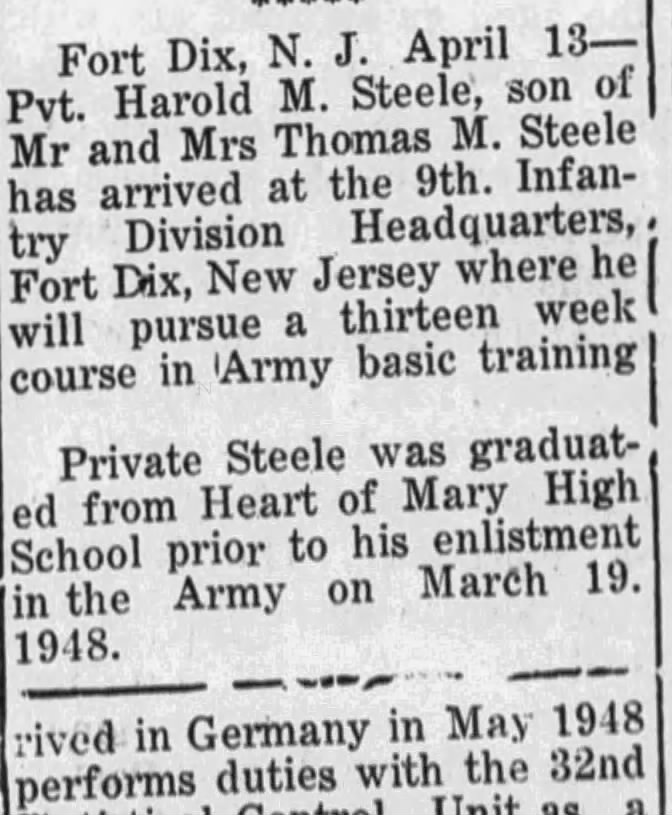
URL: https://www.newspapers.com
Steele’s hometown of Mobile, Alabama, the birthplace of Mardi Gras, is a historic Gulf Coast port city known for its vibrant cultural and arts scene. As Alabama’s only saltwater port, Mobile was pivotal in trade and industry during World War II and the Korean War. Mobile’s industries, including the Alcoa plant and Alabama Dry Dock Shipbuilding Corporation, supported the war effort and local economy.
The surrounding agricultural economy, which centered around cotton and peanut farming, supplied essential provisions for both military and civilian needs. After the war, Black veterans facing segregation helped spark the Civil Rights Movement, with Mobile playing a key role in Alabama’s progress.
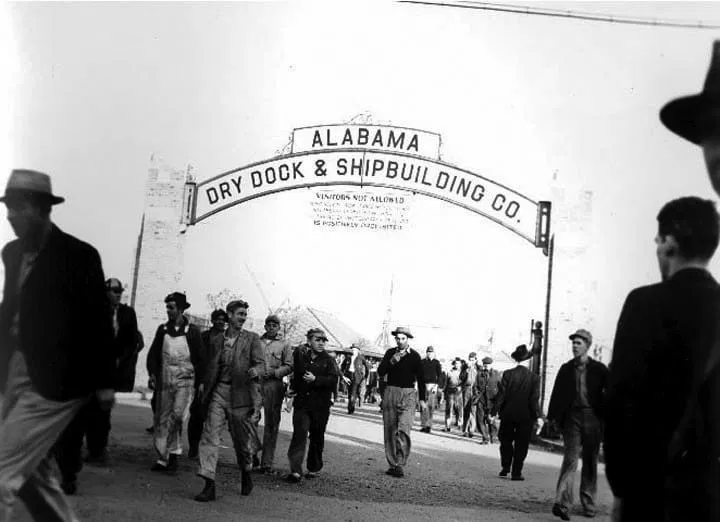
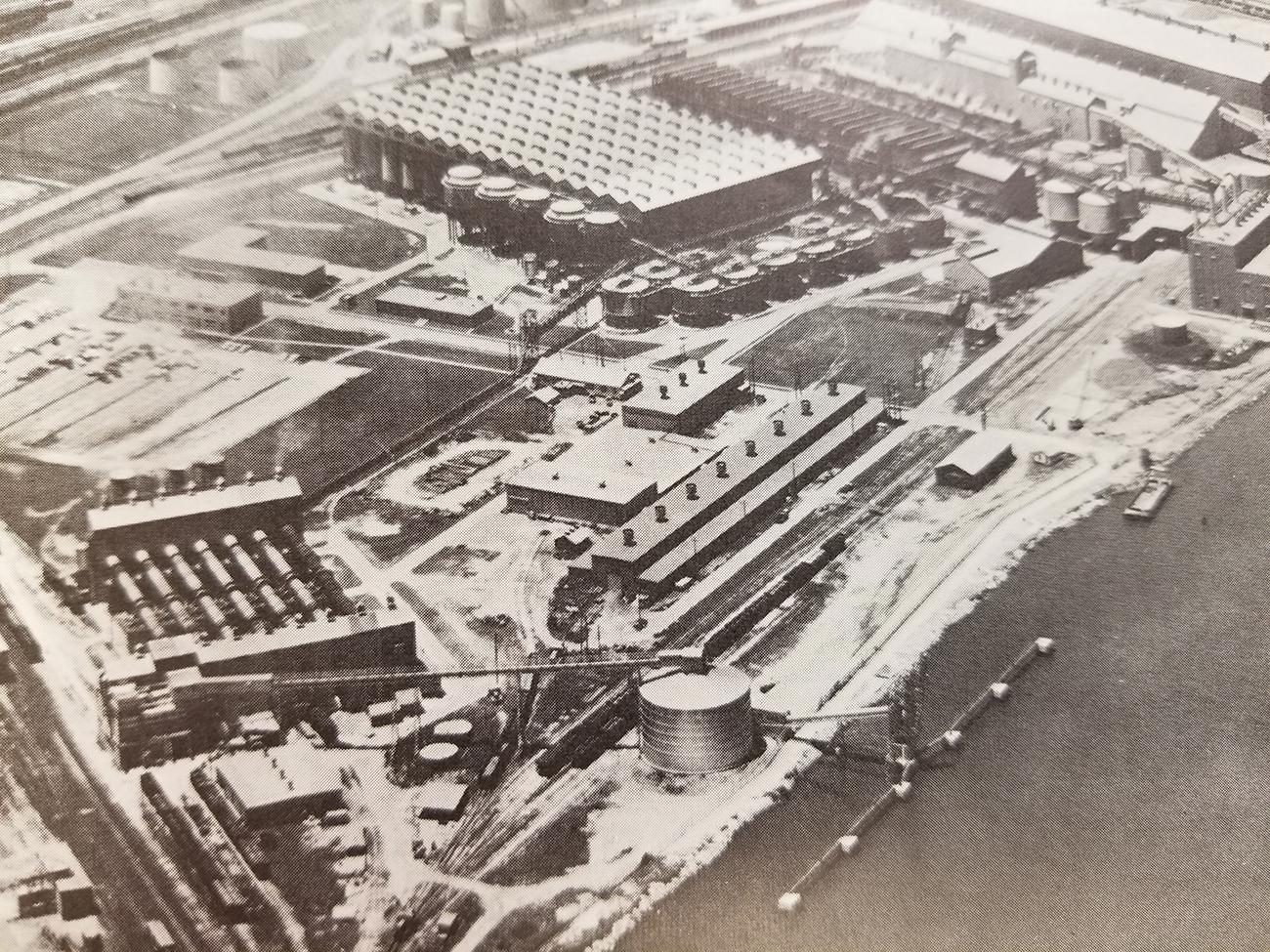
Harold Steele entered the U.S. Army at the age of 19 on March 19, 1948. Steele initially was stationed at Fort Dix in New Jersey for basic training, then transferred to Fort Lewis, Washington, from June 1948 to July 1950. As a part of the infantry, Steele left the United States to fight in the Korean War. The 9th Infantry Regiment, known as the “Manchus,” was among the first to touch down on Korean soil, arriving in the port city of Pusan, South Korea, on July 31, 1950.
Steele and his regiment were immediately placed on the line in defense of the Pusan Perimeter, receiving heavy fire in the Battle of the Naktong Bulge. Breaking their defensive position, they began to attack northward, assaulting and seizing Coverleaf and Obong-Ni Ridge on August 1, 1950. The regiment remained there until September 1, 1950, when the North Koreans broke through the regiment, causing them to retreat briefly.
The 9th Infantry Regiment then reorganized with the 5th Marine Regiment and planned a counterattack, regaining Cloverleaf and Obong-Ni Ridge and advancing north. The soldiers believed they would be home before Christmas in 1950, but that plan was undermined when the Chinese Army attacked, and the 9th Infantry Regiment sustained heavy casualties. On November 30, 1950, the Manchus began to run the “Gauntlet” to Kunuri with the rest of the 2nd Infantry Division. During that encounter, Steele went missing in action.
Steele’s parents received a letter from the U.S. Army on March 12, 1954, stating that their son was captured and taken as a Prisoner of War (POW) in North Korea. This was confirmed by other POWs who encountered him in the prison camp. These eyewitnesses confirmed that Steele died from exposure and pneumonia on February 28, 1951.
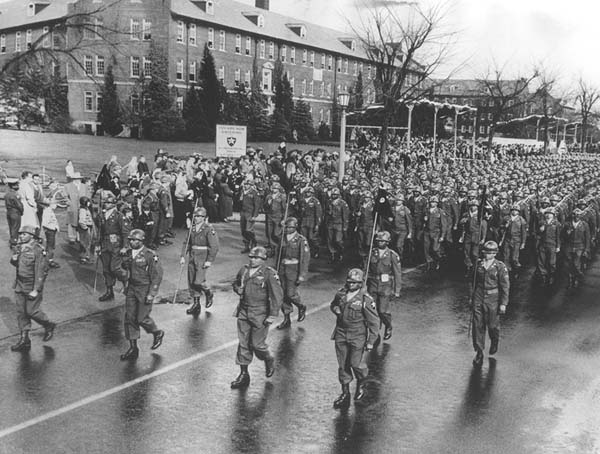
URL: https://manchu.org/linage/3rd-bn/
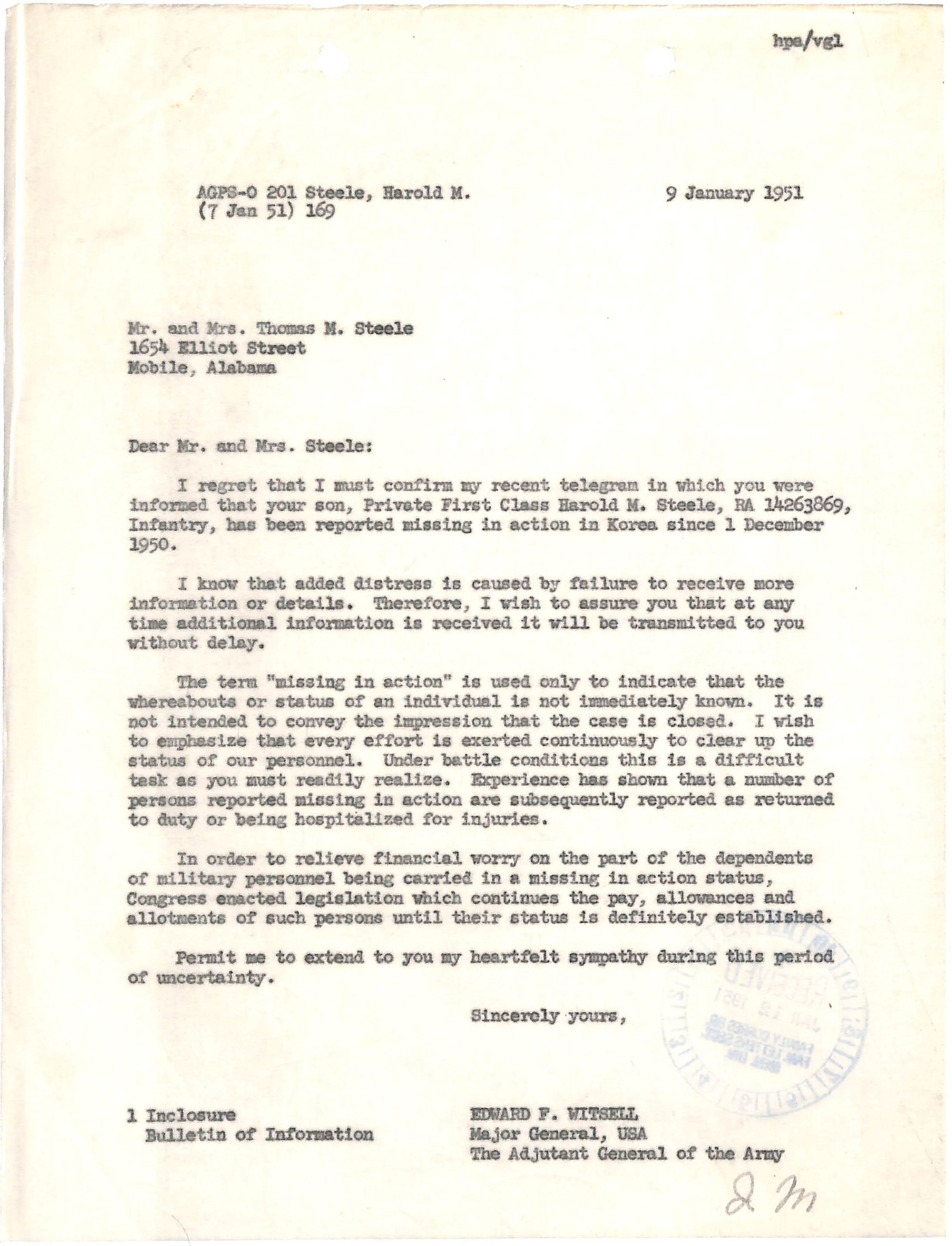
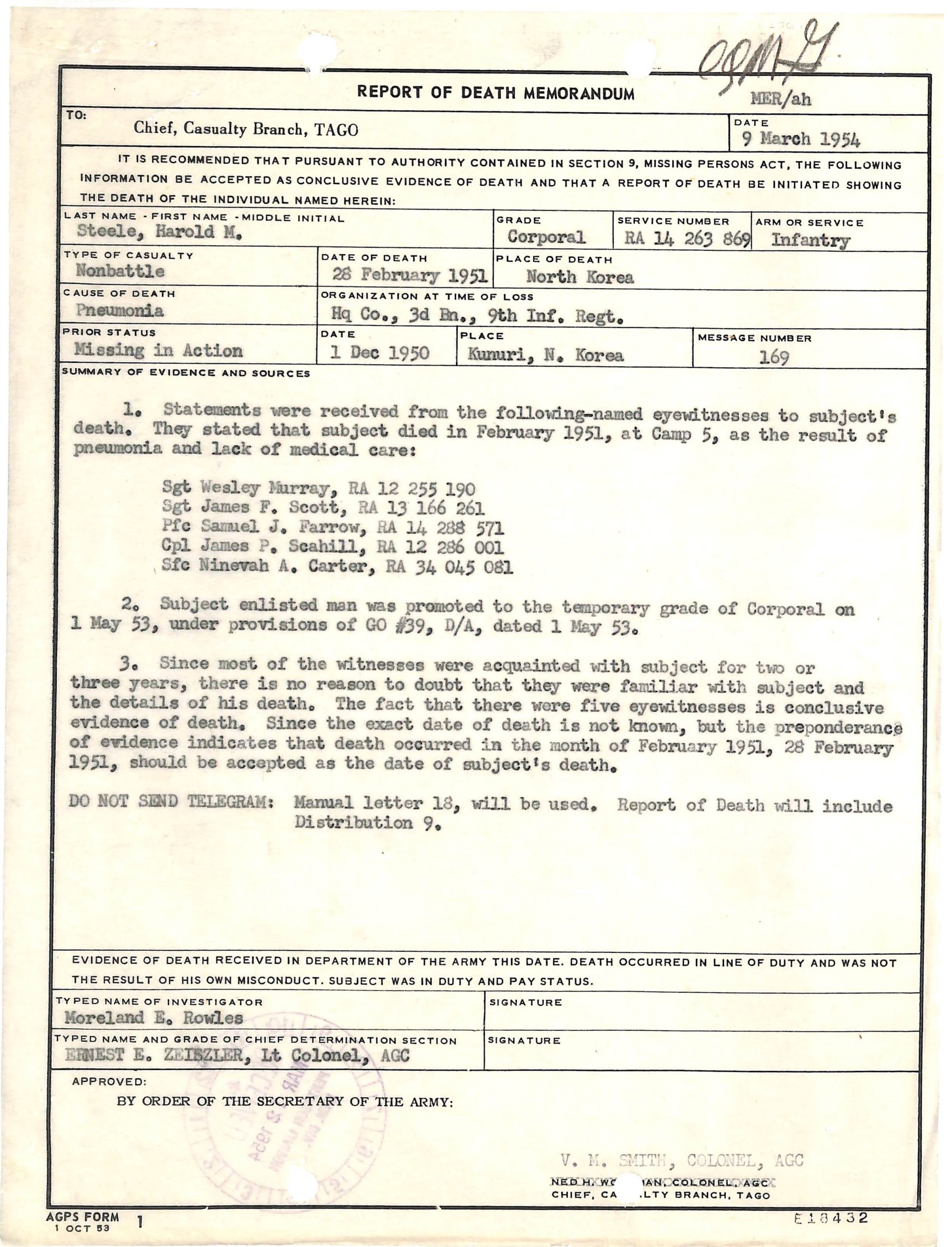
After his death, Steele was posthumously promoted to corporal on May 1, 1953, following confirmation of his death. Corporal Harold Matthew Steele received the Combat Infantry Badge, Korean Service Medal, National Defense Service Medal, Prisoner of War Medal, Purple Heart Medal, Republic of Korea Presidential Unit Citation, Republic of Korea War Service Medal, and the United Nations Service Medal following his death.
His name is permanently engraved on the Honolulu Memorial at the National Memorial Cemetery of the Pacific in Honolulu, Hawaiʻi.

Images (up to 3):
Image 1:
File Name: Steele-MemorialHawaii.jpeg
Caption: Harold M. Steele’s name is on the Honolulu Memorial at the National Memorial Cemetery of the Pacific in Honolulu, Hawaiʻi. American Battle Monuments Commission.
Primary Sources
Harold M. Steele. U.S., Korean War Casualties, 1950-1957. https://ancestry.com.
“Harold Matthew Steele.” Defense Personnel POW/MIA Accounting Agency. Accessed December 20, 2024. https://dpaa-mil.sites.crmforce.mil/dpaaProfile?id=a0Jt000000eX8UNEA0.
Harold M. Steele. U.S., National Memorial Cemetery of the Pacific (Punchbowl), 1941-2011. https://ancestry.com.
Harold Matthew Steele. Individual Deceased Personnel File. National Archives and Records Administration – St. Louis.
KOREANWAR2. Accessed April 3, 2025. https://www.koreanwar2.org/kwp2/usa/2id/002/USA_2ID_070005_1150.pdf.
“Notice.” The Mobile Weekly Advocate [Mobile, Alabama], 29, May, 1948. Newspapers.com (552943635).
Secondary Sources
“Advisory Council on Historic Preservation.” ACHP. Accessed January 31, 2025.
“Corp. Harold Matthew Steele.” Find a Grave. Accessed December 20, 2024. https://www.findagrave.com/memorial/117546027/harold-matthew-steele#.
City of Mobile. Accessed April 3, 2025. https://www.cityofmobile.org/.
“Harold Matthew Steele.” American Battle Monuments Commission. Accessed January 2, 2025. https://www.abmc.gov/decedent-search/steele%3Dharold.
“History of the Regiment.” 9th Infantry Regiment: the MANCHUS. Accessed May 15, 2025. https://manchu.org/linage/history/.
Kirkland, Scotty E. “Alabama Dry Dock & Shipbuilding Company.” Encyclopedia of Alabama. Accessed May 15, 2025. https://encyclopediaofalabama.org/media/alabama-dry-dock-shipbuilding-company/.
McGehee, Tom. “Ask McGehee: When did Alcoa operate in Mobile?”. Mobile Bay Magazine. Accessed May 15, 2025. https://mobilebaymag.com/ask-mcgehee-74/.
“Mobile’s Mardi Gras.” Encyclopedia of Alabama, August 12, 2024. https://encyclopediaofalabama.org/article/mobiles-mardi-gras/.
“Maysville Historic District”. National Park Service. Accessed May 15, 2025. https://www.nps.gov/nr/feature/places/13000959.htm.
“9th Regiment Korea 50-57.” 9th Infantry Regiment: the MANCHUS. Accessed May 15, 1950. https://manchu.org/linage/korea/.
“On This Day in 1943: White Workers Riot after Black Workers Promoted in Mobile, Alabama.” History News Network, May 25, 2020. https://www.historynewsnetwork.org/article/on-this-day-in-1943-white-workers-riot-after-black.
“The Four Towns: Mobile.” PBS. Accessed January 31, 2025. https://www.pbs.org/kenburns/the-war/mobile.
“3rd Battalion 9th Infantry Regiment 1950.” 9th Infantry Regiment the MANCHUS. Accessed May 15, 1950. https://manchu.org/linage/3rd-bn/.
The American Battle Monuments Commission operates and maintains 26 cemeteries and 31 federal memorials, monuments and commemorative plaques in 17 countries throughout the world, including the United States.
Since March 4, 1923, the ABMC’s sacred mission remains to honor the service, achievements, and sacrifice of more than 200,000 U.S. service members buried and memorialized at our sites.
Invalid input. Please use only letters, numbers, apostrophes, hyphens, or periods.